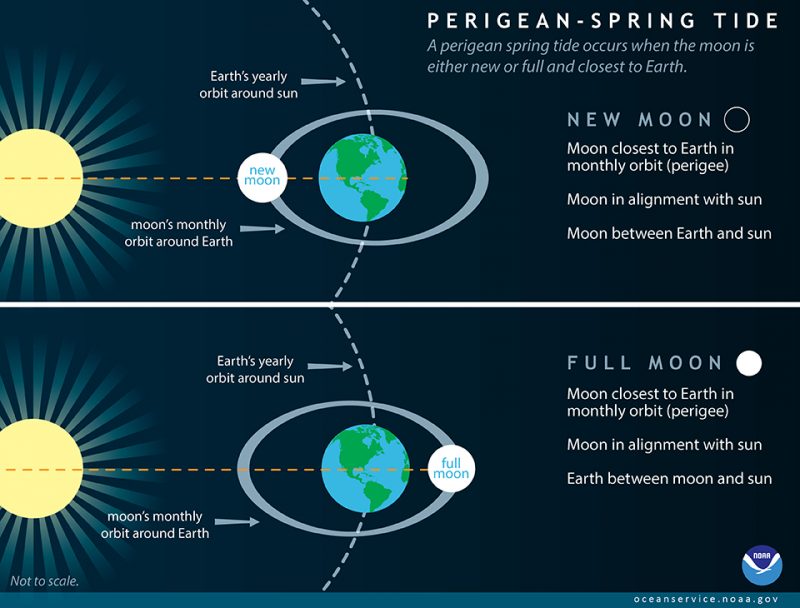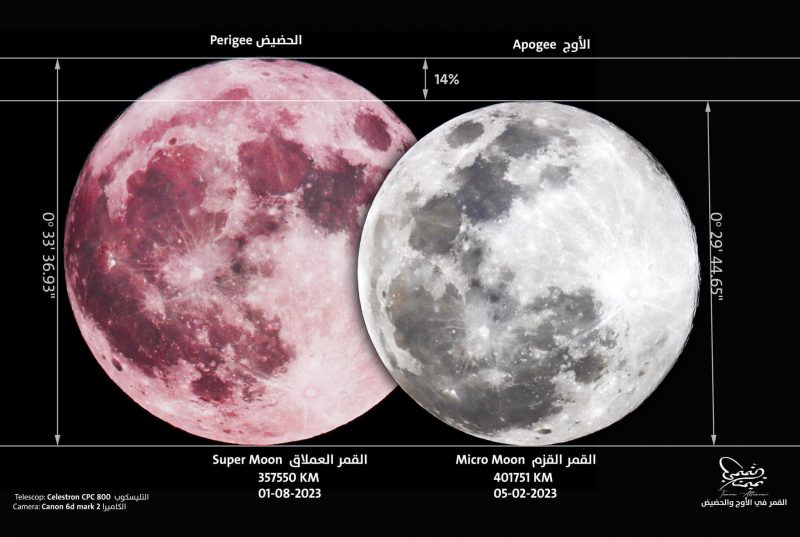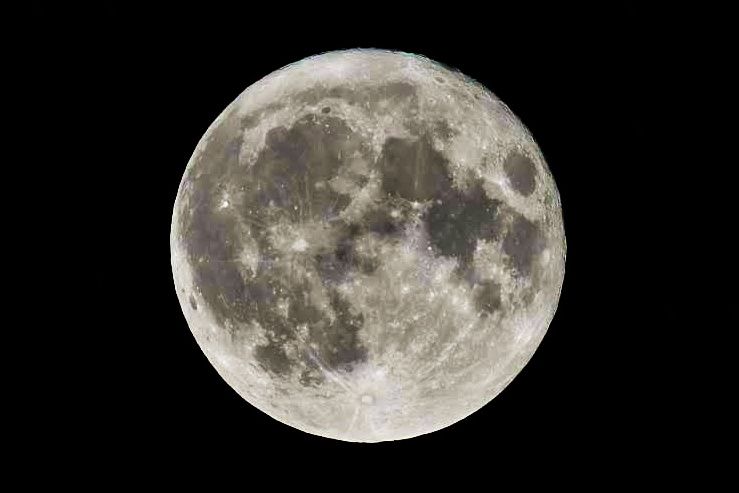Next supermoon is August 30-31, 2023
The term supermoon denotes a new or full moon that occurs at roughly the same time the moon is nearest the Earth in its monthly orbit. In fact, there are four full supermoons in a row in 2023. We’re coming up on the third one, the “most super” supermoon of 2023. It’ll fall on August 30-31, lighting up the nighttime sky from dusk to dawn.
But sometimes people ask:
Does a supermoon have a super effect on us?
Does a supermoon’s gravity pull us harder?
Here’s the important question for this discussion.
Does the moon’s gravitational pull vary with its distance? The answer is, sure, it does. The moon pulls least on Earth when farthest away in its orbit (apogee, or farthest point from the planet). And it pulls most on Earth when closest to us (perigee).
But does that increased gravity matter to us as human beings? The answer is … no, it doesn’t.
And here’s why. Gravity depends on two things. It depends directly on the masses of the two objects being gravitationally attracted. And it depends inversely on the distance between the two objects.
So … “inversely on the distance between.” That just means what we said at the top of this section. The moon pulls most strongly on Earth when closest to us. And it pulls least strongly when farthest away.
But … “directly on the masses of the two objects being gravitationally attracted.” The more massive the object, the greater the pull of gravity. The Earth and moon are both very massive. So they exert a large gravitational pull on each other.
And that’s why a closer moon can cause especially large ocean tides. Earth’s oceans are very massive, too.
But are you very massive? No. Not compared to Earth’s oceans. Consider an average 176-pound (80-kilogram) human being. The maximum difference on a person between a close moon and a distant moon is about 73 milligrams. And that is about 1/14 the mass of an ordinary paper clip.
If you factor in the solar gravity effect for a supermoon, or full moon closest to Earth, this effect may rise to about 110 milligrams. And that is roughly equivalent to about 1/9 the mass of a paperclip.
In either case, the effects are imperceptible, and far smaller than those encountered in other everyday situations, for example, being near a mountain or even near a large building.
You can expect high tides near one
But, you might observe – like I said earlier – that an extra-close full moon causes higher-than-usual perigean tides. The tides are a very different situation from human beings. Tides work through what is called a differential gravitational effect. Specifically, the force of gravity exerted on the part of the Earth opposite the moon (the far side of Earth, as seen from the moon) is slightly less than the force of gravity exerted on the part of the Earth directly beneath the moon (the Earth’s near side, as seen from the moon) at any given time.
Why? It’s because there’s an additional distance – about 8,000 miles – from one side of Earth to the other. The force of gravity weakens rapidly with increasing distance, producing the differential.

The Earth is more rigid than the oceans
The result of this differential gravitational effect of the moon is that our planet is stretched slightly along a line between the Earth and moon. The body of the Earth is fairly rigid, so it does not stretch much. However, the oceans are much more easily moved. Thus, the effect piles up water on either side of Earth. And these piles of water – created by the differential gravitational effect – are the tides. Note that, on average, the tidal effect is quite small. It raises tides only a few feet across an 8,000-mile-wide planet Earth.
Technically, the same effect acts on your body as well, since one side is farther from the moon than the other. However, the difference in distance is on the order of one foot, rather than thousands of miles. Therefore, the differential is millions of times less, and the effect on a human body infinitesimally small and irrelevant.

Supermoons do get a lot of attention
Supermoons are important because they focus attention on the moon and the sky in general. But the bottom line is that any physical effects of supermoons are not exactly super. There is no reasonable evidence that they cause super disasters. The effects that people may attribute to them are psychological rather than physical.
There are several supermoons this year and every year. To learn about supermoons in general try this EarthSky post: What is a supermoon?
Enjoying EarthSky? Sign up for our free daily newsletter today!

Can you notice a difference in the size of supermoons?
So, does the change in distance between the moon’s farthest and closest points make it appear smaller and bigger? In fact, the full supermoon can appear as much as 14% larger in the sky and 30% brighter to our eyes than at minimum size and brightness.
However, these changes do not come all of a sudden from month to month. But, without anything with to compare them with, the changes in the moon’s size or brightness are hard to quantify by simple observation. To notice the difference, you would need to see the apogean (smallest) full moon and the perigean (largest) full moon side by side.
For most of us, it’s only possible through photography or through some form of direct measurement. Although, careful observers have claimed to be able to discern a supermoon’s extra large size with the eye.

Where did the term supermoon originate?
An astrologer, not an astronomer, coined the term supermoon, and it has come into wide usage recently. It’s an example of modern folklore, largely accepted and spread by a now-global community, via word of mouth and the internet.
In astronomy and other sciences, a related term – perigean tides – refers to the higher tides that can occur when a new or full moon and the month’s perigee coincide, as they frequently do. Simply put, an extra-close new or full moon causes higher-than-usual perigean tides.

Bottom line: Sure, the moon (and sun) creates the tides. And an extra-close moon can create higher-than-usual tides. But this doesn’t mean that an extra-close new or full moon – a supermoon – has an effect on human beings. In fact, the effects of a supermoon are imperceptible, and far smaller than those encountered in other everyday situations, such as being near a mountain or even a large building. Of course, that beautiful bright full supermoon will draw your eyes to the sky.
The post Does a supermoon have a super effect on us? first appeared on EarthSky.
0 Commentaires